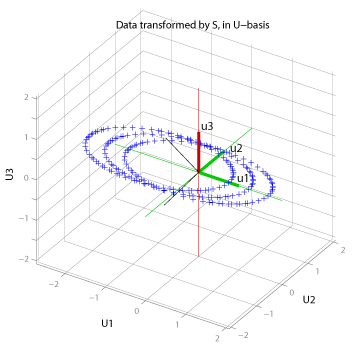 Now we'll look at how your garden-variety biologist (Mr B) approaches the phenomenon of consciousness. For now, we'll have him treat it as he would any other biological phenomenon.
Now we'll look at how your garden-variety biologist (Mr B) approaches the phenomenon of consciousness. For now, we'll have him treat it as he would any other biological phenomenon.Recall that Mr B takes a naturalistic, empirical approach to things. His first order of business is to determine what variables are correlated with conscious states (just as he did with action potential generation). We'll focus mostly on conscious perception of external events (e.g., seeing a sunset), so as to avoid the complexity of things like consciousness of one's thoughts (e.g., the experience of thinking about a chess move).
Mr B does not focus narrowly on experiments that tell us about the neural basis of consciousness, but also on experiments that reveal important details of the structure of consciousness itself and its relationship to external stimuli (i.e., psychophysics). The more empirical constraints, the better. It is possible to learn a great deal about respiration without knowing anything about the respiratory system: you can learn how the inputs (composition of air breathed) and outputs (exhaled air) relate to one another, and to other variables such as the blood pressure and breathing rate of the organism. Hence, learning about a biological mechanism doesn't mean focusing in on that mechanism exclusively: much can be learned by studying its products, how it is perturbed by inputs, etc..
The brain is necessary for conscious experience
At the grossest and most obvious level, Mr B notes that the only organ necessary for consciousness is the brain. Contrary to the Greeks' heart-based theory of mind, he knows people have literally lived without hearts, perfectly conscious, for months (article here). You can lose kidneys, arms, your stomach, etc, and while you may not be healthy or happy, you will still be conscious. Conversely, if you inactivate a brain with an anesthetic, the loss of consciousness will be quite dramatic.
The brain is sufficient for conscious experience
 Take a powerful hallucinogen and entire new experiences are evoked endogenously. Something similar seems to happen while dreaming: a world is experienced that is largely independent of present sensory inputs. Amputees often feel that the removed limb is still present, moving around, making gestures, in the well-known 'phantom limb' phenomenon (this has been shown to not be due to irritation of the nerves at the end of the severed limb).
Take a powerful hallucinogen and entire new experiences are evoked endogenously. Something similar seems to happen while dreaming: a world is experienced that is largely independent of present sensory inputs. Amputees often feel that the removed limb is still present, moving around, making gestures, in the well-known 'phantom limb' phenomenon (this has been shown to not be due to irritation of the nerves at the end of the severed limb).In all such cases, we experience a world that is not actually there. So the brain in effect constructs the experience. Some might like to say that the brain builds a 'representation' or 'simulation' or 'virtual reality model' of the world, and this is what we experience. Mr B may slip into such (often metaphorical) language, but for now he just means that experience is a neural construction, which is a more neutral way to put things (though note by saying it is a 'construction' he doesn't mean to imply it is a "mere construct" with no validity).
Note this hypothesis already generalizes beyond the data: Mr B is assuming that perceptual experience during normal waking periods is generated by similar mechanisms to those used during sleep, hallucinations, and phantom limbs. Mr B realizes this could be a mistake, but as a provisional hypothesis, it seems reasonable, especially given the existence of illusions generated even in healthy brains (we will have more to say about illusions later).
Implicit in the hypothesis that experience is a neural construct is the claim that neural processes of a certain sort (to be determined) are not just necessary, but sufficient for experience. Given his general biological approach, it seems a conclusion almost forced upon Mr B.
In the next post, we'll continue to follow Mr B in his quest to understand consciousness. He'll see just how complicated a problem he has taken on.





















